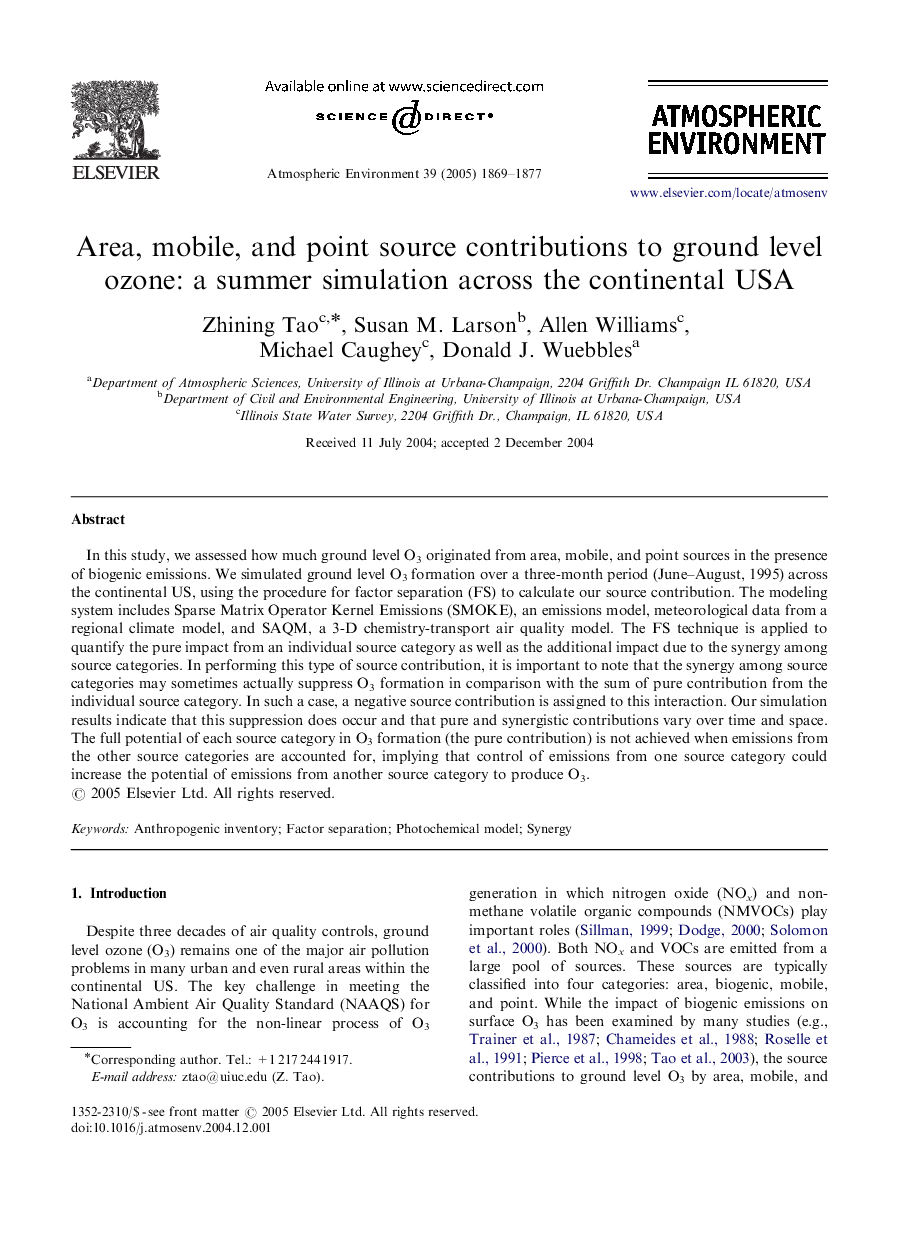| Article ID | Journal | Published Year | Pages | File Type |
|---|---|---|---|---|
| 9458825 | Atmospheric Environment | 2005 | 9 Pages |
Abstract
In this study, we assessed how much ground level O3 originated from area, mobile, and point sources in the presence of biogenic emissions. We simulated ground level O3 formation over a three-month period (June-August, 1995) across the continental US, using the procedure for factor separation (FS) to calculate our source contribution. The modeling system includes Sparse Matrix Operator Kernel Emissions (SMOKE), an emissions model, meteorological data from a regional climate model, and SAQM, a 3-D chemistry-transport air quality model. The FS technique is applied to quantify the pure impact from an individual source category as well as the additional impact due to the synergy among source categories. In performing this type of source contribution, it is important to note that the synergy among source categories may sometimes actually suppress O3 formation in comparison with the sum of pure contribution from the individual source category. In such a case, a negative source contribution is assigned to this interaction. Our simulation results indicate that this suppression does occur and that pure and synergistic contributions vary over time and space. The full potential of each source category in O3 formation (the pure contribution) is not achieved when emissions from the other source categories are accounted for, implying that control of emissions from one source category could increase the potential of emissions from another source category to produce O3.
Keywords
Related Topics
Physical Sciences and Engineering
Earth and Planetary Sciences
Atmospheric Science
Authors
Zhining Tao, Susan M. Larson, Allen Williams, Michael Caughey, Donald J. Wuebbles,
